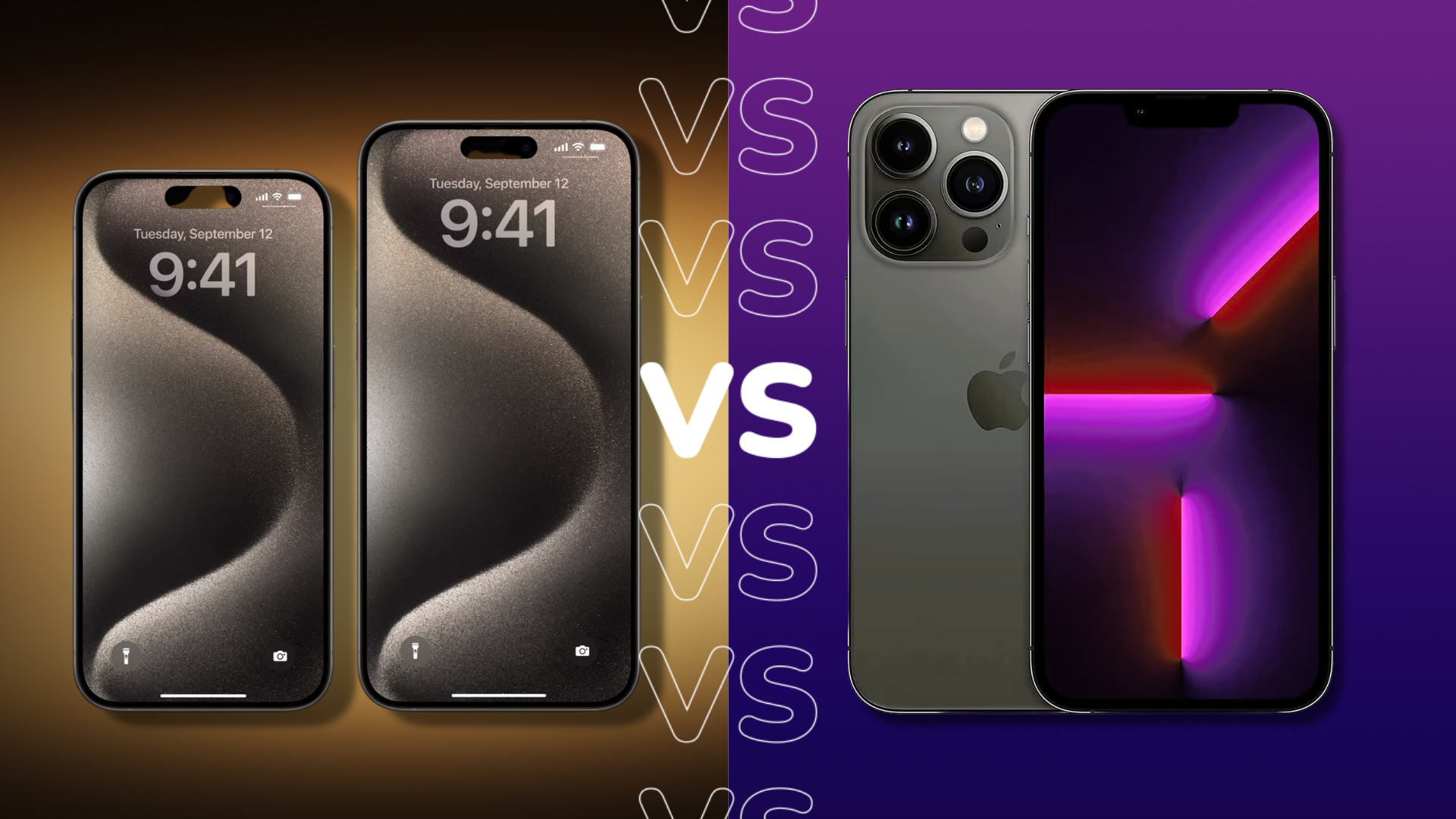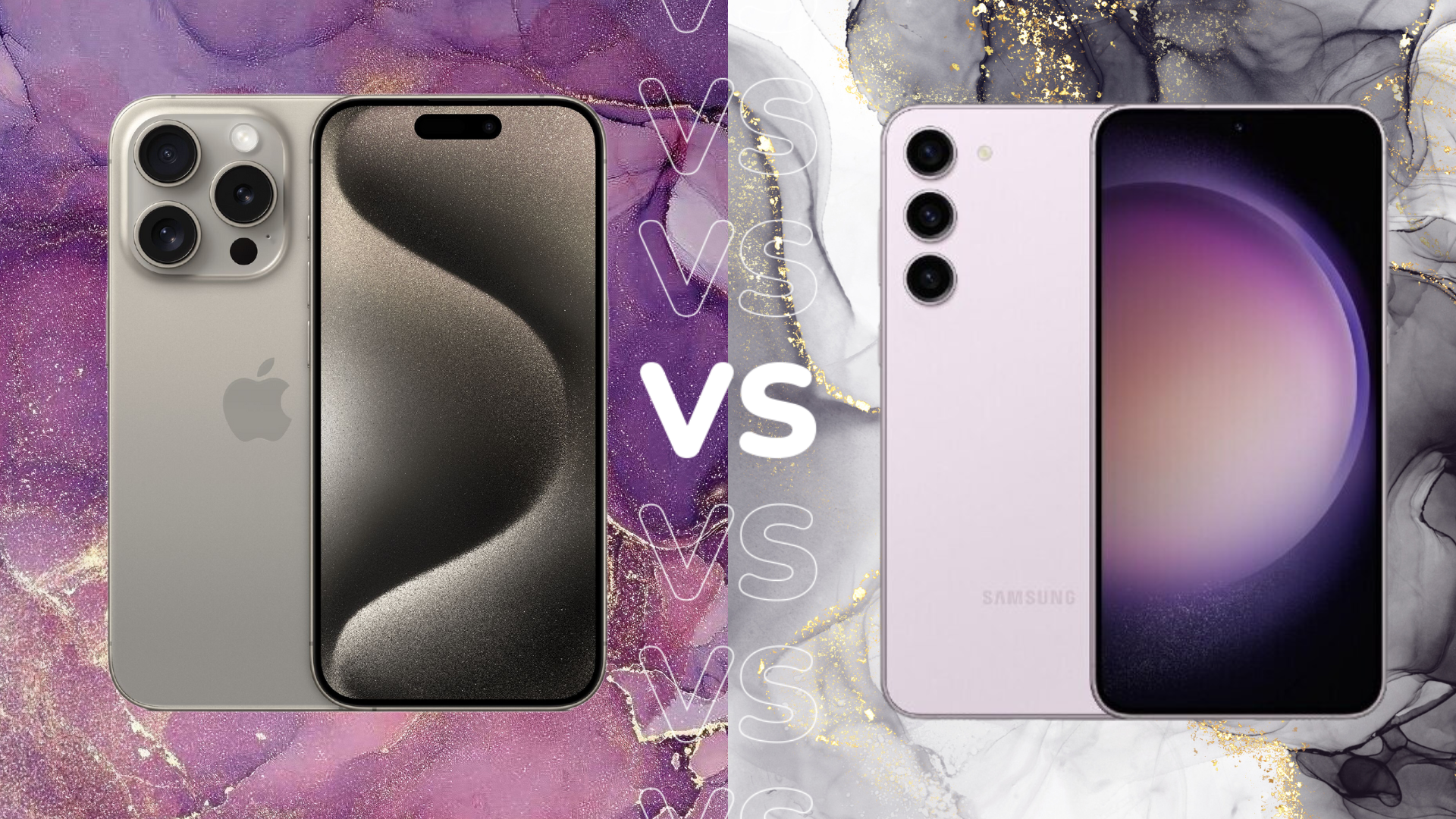The iPhone 15 launch signals the biggest lack of Apple innovation yet
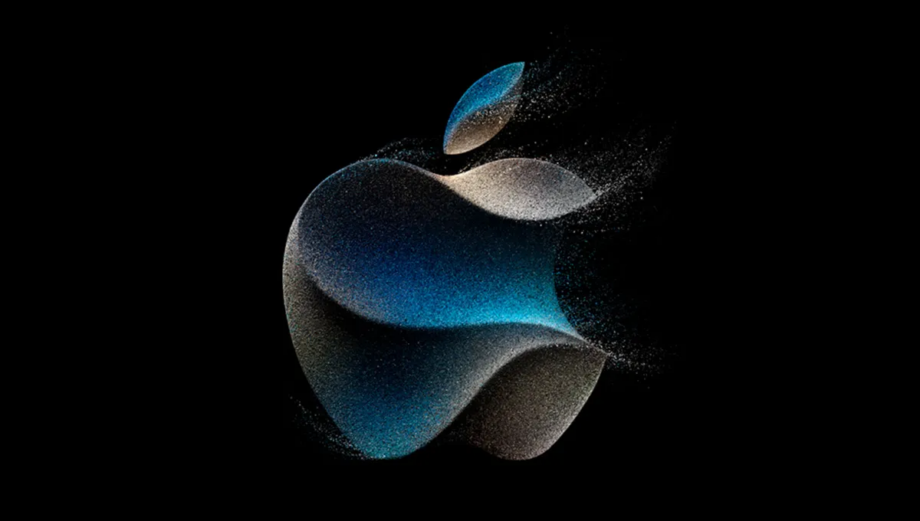
OPINION: Apple’s Wonderlust event may go down in history, but not for good reasons. That’s because, despite the fact we saw four new iPhones and two new Apple Watches, it’s probably the most underwhelming Apple launch in recent memory.
Could the behemoth that is Apple actually be struggling to innovate? While I’d have baulked at the idea a few years ago, today, I’m not so sure.
Let’s start with the rather dismal upgrade to the Apple Watch in the form of the Apple Watch Series 9. Now it does have an upgraded S9 SoC that delivers the first upgrade in performance in a few years, Precision Finding for iPhone and a few new Siri-related features, but it’s not exactly revolutionary.
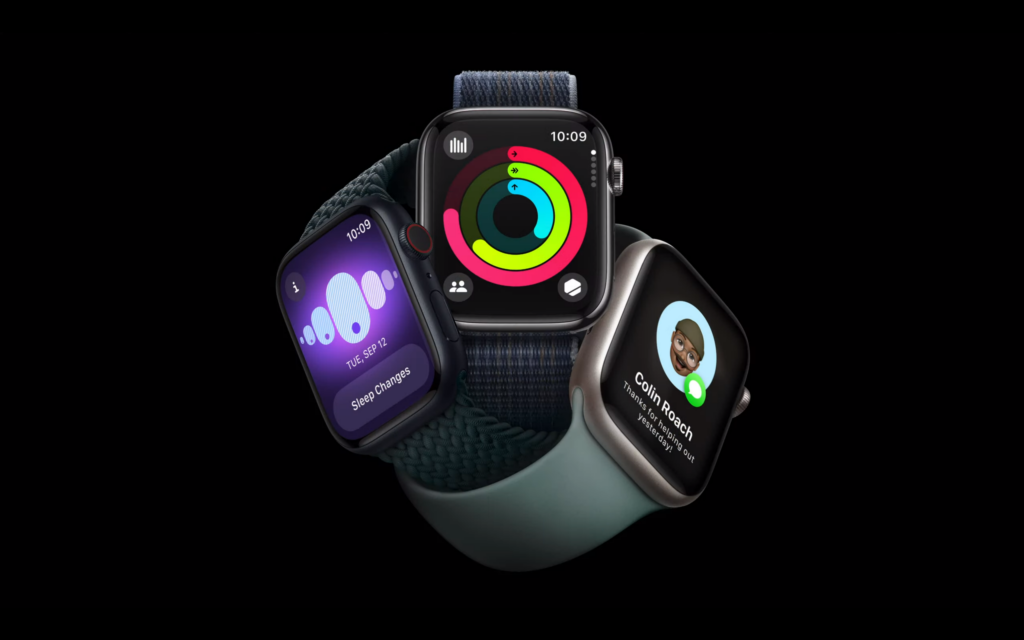
You might now be screaming “BUT WHAT ABOUT DOUBLE TAP?!” and reader, I have news for you: that has been available on the Apple Watch for years. The double-tap functionality has been buried within the Accessibility options menu for quite some time, allowing you to double-tap your fingers, clench to make a fist and more to trigger on-screen actions.
Granted, there’s a little more nuance to the official double tap feature when compared to its accessibility-focused counterpart, but there really isn’t much in it, especially considering it’s basically the big feature of the new Apple Watch with no new or improved sensors on this year’s wearable.
It’s a similar story with the iPhone 15 this year. Yes, it is quite the upgrade from the iPhone 14 with new features like a 48MP primary camera, Dynamic Island tech and an A16 Bionic chipset to power the experience, but none of these are technically new – they were all features of the iPhone 14 Pro last year.
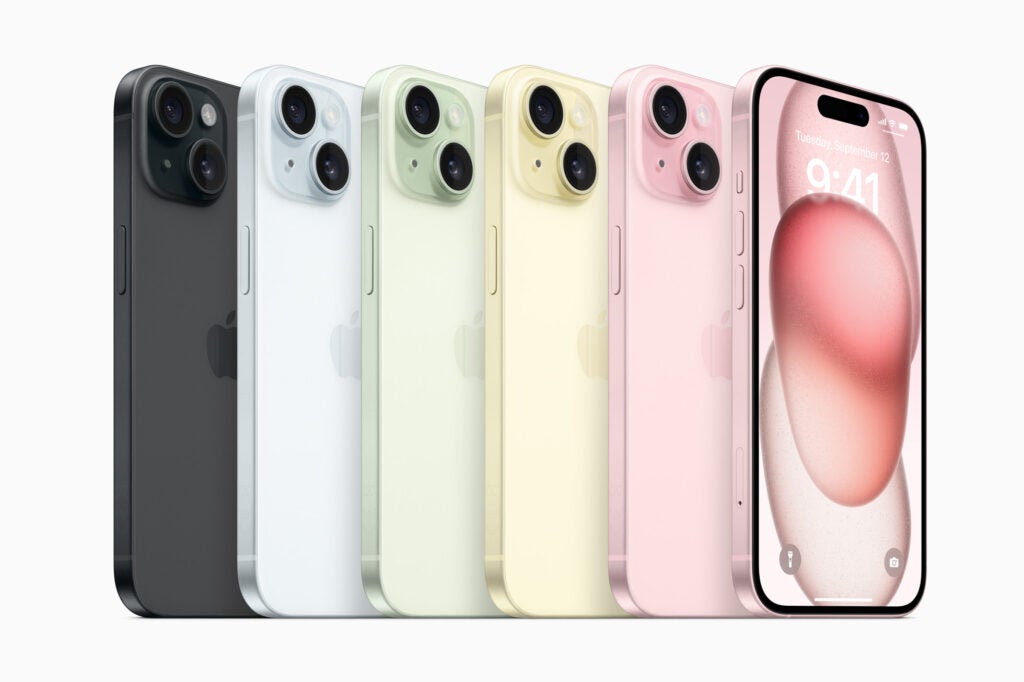
Essentially, the iPhone 15 is the iPhone 14 Pro without a smooth 120Hz refresh rate or USB-C connectivity.
Even when looking at the Pro models, it’s hard to see any huge leaps forward. The second-gen 48MP camera has had tweaks, there’s an upgraded titanium chassis and the A17 Pro looks to be a powerful 3nm chipset, but there aren’t any game-changing updates that’ll completely rethink how you use your iPhone.
The only truly new feature is the Action Button, a customisable side button that replaces the mute switch on older models. There’s also a new 5x optical zoom available, but that’s only on the top-end iPhone 15 Pro Max.
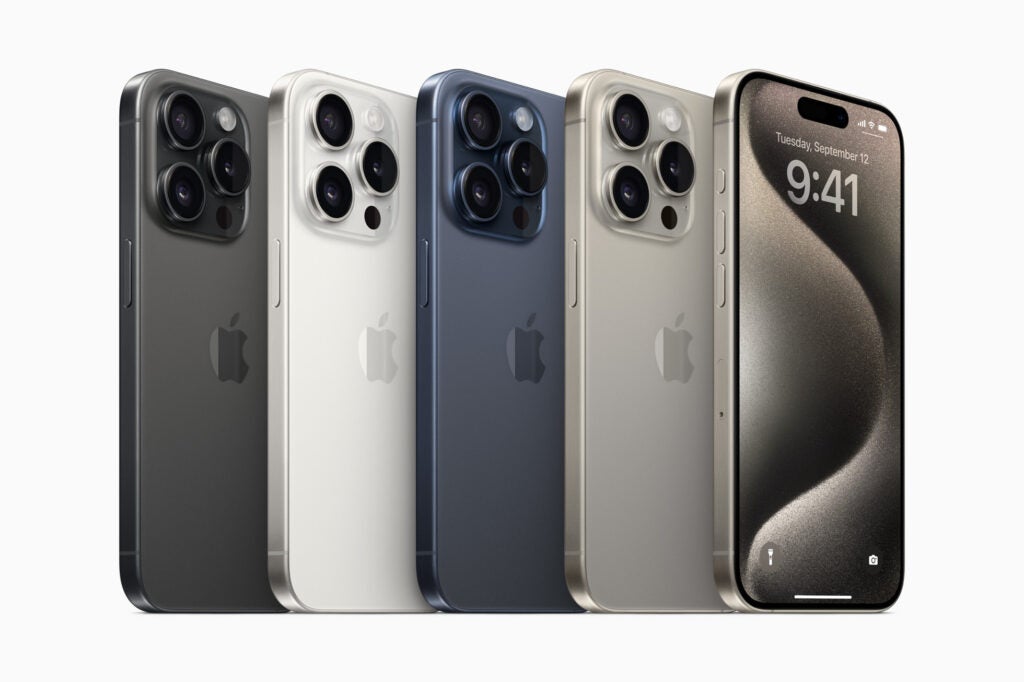
However, it’s Apple’s handy product summary graphics that really nails this thought home. Whenever an Apple product is announced, it’ll end with a graphic showing some of the top new features available. It has been a staple of Apple presentations for years, so much so that some Android manufacturers now do something similar in their launches.
The problem is that, this year, those graphics included quite a few features already available on previous iterations of iPhone and Apple Watch.
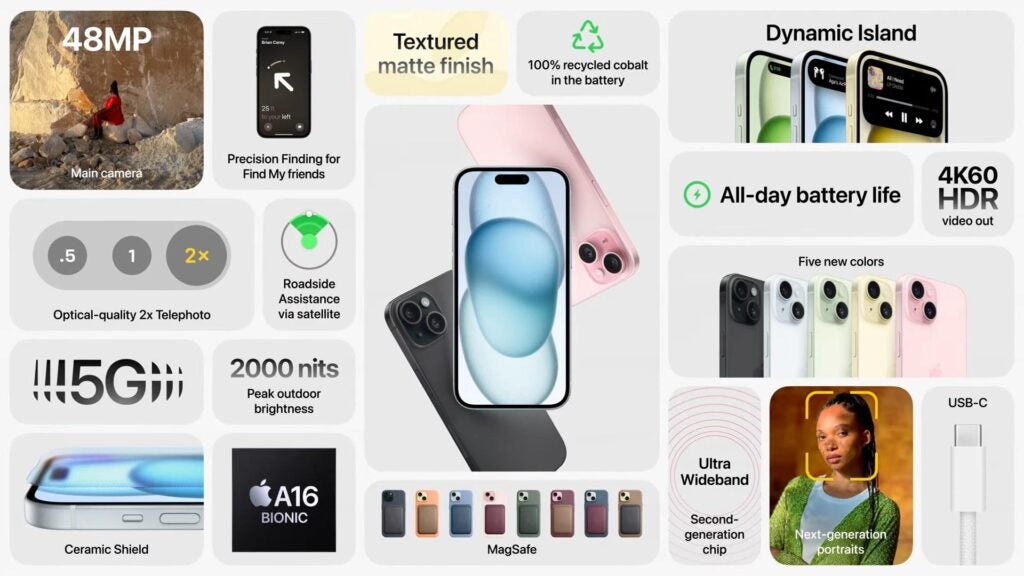
Take the above iPhone 15 infographic for example; elements like 5G, Ceramic Shield, All-day battery life, MagSafe and 4K@60fps HDR capture are already present in the iPhone 14 collection.
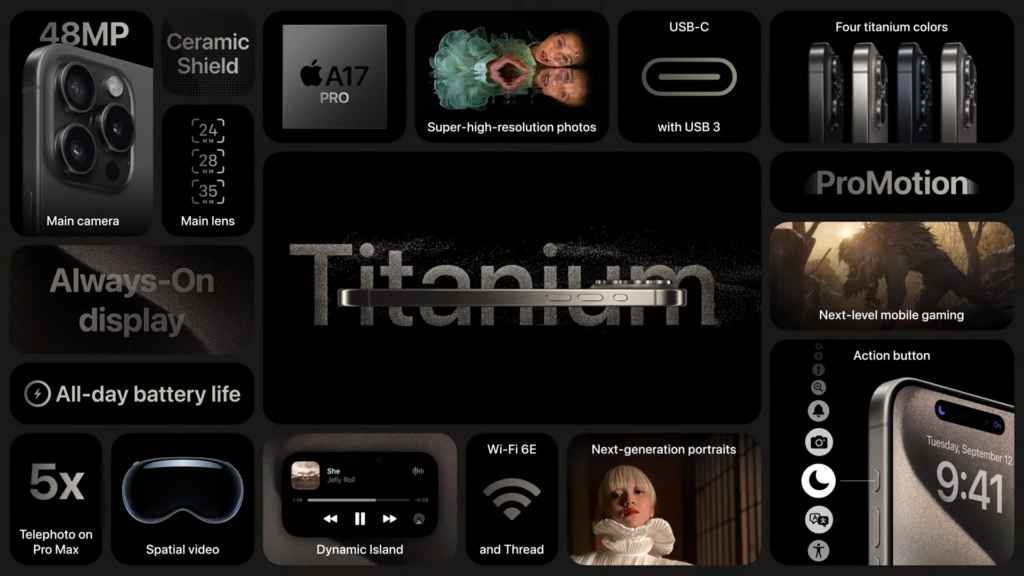
It’s not alone either; the iPhone 15 Pro infographic includes already-announced features like ProMotion, all-day battery life, an always-on display, ceramic shield protection and a 48MP main camera.
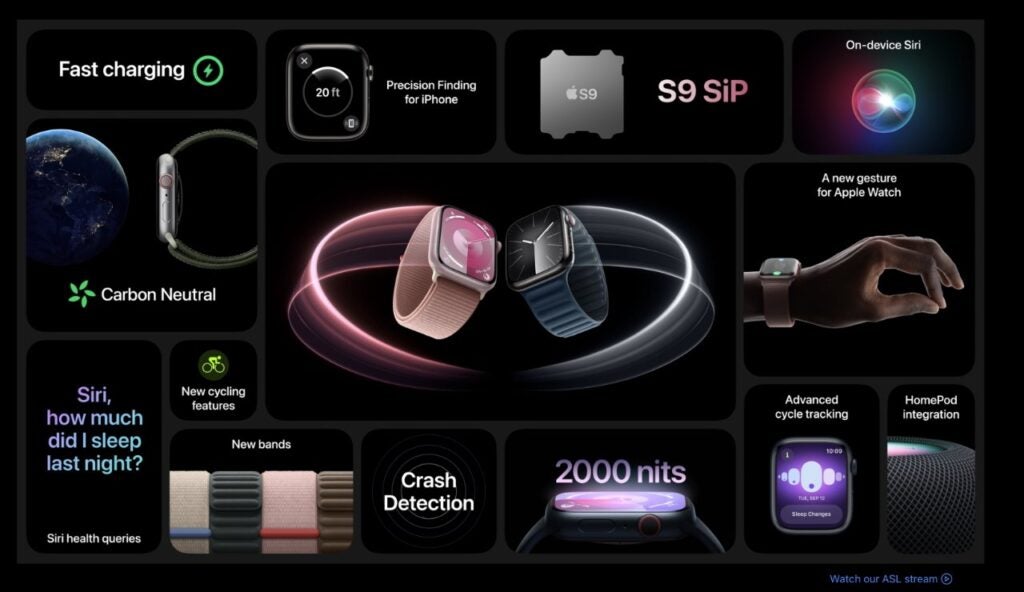
Yep, you guessed it, it’s also true of the Apple Watch Series 9 infographic. Features like fast charging and crash detection are already available in earlier versions of the Apple Watch – all the way back to the Series 7 when it comes to fast charging.
Essentially, if Apple is going to remain the dominant player in the smartphone space for the next few years, it’ll need to do a lot with the iPhone 16 and Apple Watch 10.


